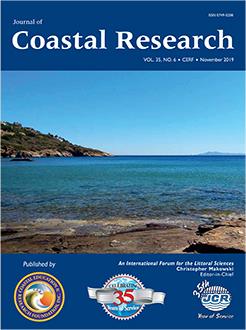Watson, P.J., 2019. An assessment of the utility of satellite altimetry and tide gauge data (ALT-TG) as a proxy for estimating vertical land motion. Journal of Coastal Research, 35(6), 1131–1144. Coconut Creek (Florida), ISSN 0749-0208.
Policy, planning, and adaptation responses to sea-level rise are being developed at increasingly localised scales, placing greater emphasis on sea-level studies to more accurately account for all vertical land motions (VLM) at tide gauge sites using technologies such as global navigation satellite systems (GNSSs). Although the spatial coverage and length of GNSS data records continues to increase in proximity to tide gauges, large tracts of the world's coastlines contain limited or no GNSS data. Various studies have investigated proxy methods of estimating VLM by trends from differenced altimetry–tide gauge techniques (ALT-TG). This study has concentrated on investigating the utility of ALT-TG techniques using so-called ‘off the shelf’ gridded satellite altimetry products (U.S. National Aeronautics and Space Administration Jet Propulsion Laboratory [NASA JPL] and Copernicus Climate Change Service [C3S]) for use in regional and local scale sea-level studies to estimate VLM. Twenty locations across the globe were analysed; these locations met specific data constraints designed to ensure the longest overlapping coverage of GNSS, altimetry, and tide gauge data, with the proximity of the GNSS record limited to within 1 km of the tide gauge. The utility of ALT-TG estimates was significantly improved by using gridded altimetry products no closer than 30 km from the open coast. When compared directly with measured GNSS solutions from NASA JPL, Systeme d'Observation du Niveau des Eaux Littorales (SONEL), and Nevada Geodetic Laboratory (NGL), both ALT-TG VLM estimates agree with the NGL GNSS solution for 19 of the 20 locations (95% confidence interval). This is significant given that the NGL estimates are derived over the longest timeframe available from all three key GNSS data repositories considered. If one considers the limitations of altimetry sea surface height measurements in the coastal zone, the results using gridded sea surface height anomaly products for ALT-TG derived estimates of VLM are extremely encouraging for sea-level research.





